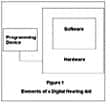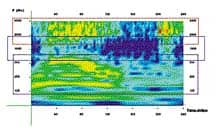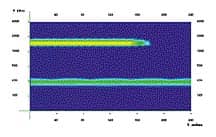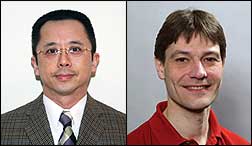Part 1: The external ear canal and impression-making materials
A series of articles on one of the most critical—and problematic—components of the hearing instrument fitting process: impression-taking and the resulting earmold or earshell.
A custom hearing instrument requires an earpiece to couple the device with the ear canal both acoustically and physically. For a behind-the-ear (BTE) hearing aid, the coupler is called an earmold; for an in-the-ear (ITE) hearing aid, it is an earshell.
To make a custom earmold or earshell, a model of the ear is required. The model, called an ear impression, is obtained by filling the external ear with soft putty plastic, commonly silicone. The silicone polymerizes and sets up in the ear within minutes and becomes the ear’s true negative replica.
There remains a direct relationship between the impression-taking technique, the skills of the technician who crafts the earpiece, and the patient’s satisfaction with the hearing instrument. This series of articles discusses an array of topics related to the physical and acoustic aspects of hearing instrument fittings—including the new digital CAD/CAM shell process and what it means for impression-taking—and will guide you through the essential steps of making a properly fitting and acoustically tuned custom earmold or hearing aid shell.
An Overview of the Ear Canal, Impressions, and Earmolds
The external ear canal. The human external ear consists of the pinna, ear canal, and eardrum. Figure 1 shows the external ear in three different views. The canal has two bends, with the eardrum located beyond the second bend, except in cases such as surgical patients and those with developmental anomalies or malformations (eg, atresia, stenosis, etc). These bends, observed in the transverse view of the ear, give the canal a unique but consistent pattern of parallel lines. The tragus line tends to be parallel to the line of the canal medial end, and the two bends have approximately the same angle.

|
| FIGURE 1. Side view and cross sections of the external human ear: Sagittal (or Lateral); Frontal (or Coronal) view; Axial (or Transverse) view. |
Anatomically, the section between the ear’s first and second bend is made up of cartilage. This cartilage is soft and pliant, and it is often lined with earwax produced by sebaceous and cerumenous glands situated deeper in the canal. The canal cartilage can be stretched by the earmold and still remain within comfort limits. The cartilage is also subject to shifting resulting from jaw movements. The jaw’s downward movement commonly stretches the anterior ear wall and increases the volume of the ear canal.
Beyond the second bend of the ear canal, the cartilage thins and eventually disappears, and the ear wall becomes more rigid. The underlying tissue of the bony area has no subcutaneous layer, is quite thin, highly vascular, and quite sensitive.
The ear impression. The most up-to-date research data1-7 indicates that hearing aid shells and earmolds have a greater chance of being feedback free and comfortable if the ear impressions:
1) Have no under-filled areas such as gaps, weld marks or air pockets.
2) Illustrate the two bends of the auditory passage in full.
3) Have high after-cure dimensional stability.
4) Adequately reflect the softness of the cartilaginous tissue of the ear.
5) Demonstrate the increase in ear canal diameter resulting from the jaw’s downward movement.

|
| FIGURE 2. The transverse view of the human ear shown with an ear impression taken past the canal second bend and an earmold crafted from the impression. |
Figure 2 shows a transverse view of the ear with an ear impression taken past the canal second bend and an earmold crafted from that impression. Note the location of the ear canal’s first and second bends and its parallel structure.

|
| FIGURE 3. Fitting and non-fitting surfaces on an earmold. |
Hearing aid earmolds and earshells. In the language of a shell lab technician, the surface on an earmold or hearing aid shell is either “fitting” or “non-fitting” (Figure 3). A non-fitting surface neither makes contact with the ear nor contributes to the earmold/shell fit. For example, the lateral plane of an earmold is a non-fitting surface. Fitting surfaces meet with the ear and can be critical or semi critical. Critical surfaces include the acoustic seal area in the ear canal and retention areas at the tragus, antitragus, and helix. The flaring area at the canal second bend is also a critical fitting surface. Semi-critical surfaces include the medial planes of the concha and helix.
Acoustic sealing in most earmolds and hearing aid shells occurs between the first and second bend of the ear canal. If the earmold or hearing aid shell—for any reason—fits loosely in this area and allows for sound leakage from the ear canal, the hearing instrument will be susceptible to acoustic feedback.
It is a common belief that the closer the shape of an earmold or hearing aid shell resembles the impression, the better the fit of the instrument. While this may be true in some fittings, in general, fewer fitting problems occur if the impression is skillfully trimmed and coated with wax by the earmold lab technician. This is related to the fact that the ear canal wall is supported by different anatomical structures such as muscles, cartilage, fat and bone, all possessing different softness and sensitivity. These factors must be accounted for in impression processing if the earmold or hearing aid shell is to fit comfortably and seal the ear adequately. (Author’s Note: In the following text, earmolds and ear shells will be collectively referred to as “earmolds” to avoid repetition. When a distinction between the two terms is needed, each will be used separately.)
Ear Impressions and Otoscopic Examination
Preparation for taking an ear impression should include hygienic procedures that are strictly followed as a matter of routine: Wash your hands thoroughly with soap and warm water before and after making the impression (a suggested part of protocol even when using gloves or a pistol injector). Clean the specula of the otoscope, ear-light tip, syringe, etc, with an antiseptic solution. Some equipment used in otoscopy is not meant for reuse and therefore the cleaning of these pieces is inappropriate.
During otoscopic examination:
• Check for abnormalities. Examine the ear canal for foreign objects, excessive wax, abnormal growths, or any condition that is out of the ordinary. Determine whether or not wax removal is appropriate. If removal is contradicted or beyond your scope or comfort level, a referral to an otologist or otolaryngologist is necessary.
• Determine oto-block size. Check the ear canal for size to determine how large the oto-block should be. Blocks that are too small may get pushed down the canal by the impression material and allow the material to flow past the block; blocks that are too large may not go far enough into the ear canal. If you are dealing with a post-surgical ear, use a larger oto-block than normal, or several oto-blocks.
• Understand the anatomy of the individual ear canal. Check which way the canal twists and bends. Look for the second anatomical bend. This will give you an idea of which direction to push the block for insertion in the proper position.
• Understand the dynamic ear canal. Encourage the patient to open and close his/her mouth to determine the effects of mandibular movements on the ear canal wall. Look at the anterior ear wall at the canal aperture. If any movement is apparent, taking an open-mouth impression is recommended; and
• Check for landmarks in the canal. Look for any bumps, hollows, or ridges then circle them on the finished impression. This ensures that the earmold lab technician will not fill the voids assuming they were air bubbles or other imperfections.
Tools and accessories. Depending on impression taking technique and material, the selection of tools and accessories employed for impression making will vary. This includes the selection of oto-blocks, syringes, pistol injectors, mouth props, and other items.
• Oto-block. The function of an oto-block is to prevent impression material from reaching the eardrum. All ear impressions should be taken with an oto-block.
Oto-blocks are made of cotton or foam, and come in a variety of sizes. Foam oto-blocks can be standard with a thread, or pressure relief with a ventilation tube. A vented block consists of a dam made from a slow recovery foam and a ventilation tube. The purpose of the tube is to equalize air pressure, make impression removal easier, and reduce the risk of vascular irritation.
Flattening the cotton ball out helps to seal the canal so the impression material does not flow around it. Cotton tends to be more comfortable for deeper canal impressions. However, in a draining ear or a post-surgical ear canal, cotton fibers may adhere to the canal wall and provide a host for bacterial infection.
• Mouth prop. A mouth prop is a styrofoam white block. It is used to take ear impressions with the client’s mouth wide open. The prop must be inserted into the patient’s mouth prior to syringing the impression material and must remain there until the impression has cured.
• Marking card. When an impression for a hearing aid with a directional microphone is taken, use a marking card to imprint the horizontal plane of the ear in the hardening silicone. The mark in the impression will allow the earmold lab technician to properly align the microphones on the hearing aid faceplate.
• Impression syringe. Impression syringes are commonly used for impression taking. They are loaded from the back. The impression material is deposited in the barrel and moved forward with the insertion of the plunger. Loading is commonly a one-step operation. However, in some syringes, two-step loading is required. First, the impression material is deposited in the larger chamber. Then, with the insertion of the plunger the material is pushed into the smaller chamber. There are over 10 different models of syringes on the market. The most recommended are syringes that are easy to load, self-cleaning, offer a good grip, and require minimum pressure to operate.

|
| FIGURE 4. Pistol injectors and cartridges used in audiology for impression taking. |
• Injector pistol. There are four different pistol injectors (Figure 4) currently available: 1) Manual “grey” trigger injector; 2) Manual “ivory” trigger injector S50; 3) Electrical Injector Control, and 4) Electrical cordless HI 50 injector. There are two types of cartridges: 48 ml and S50. The manual “grey” injector is designed for the 48 ml cartridge, and the S50 “ivory” injector is suitable for the S50 cartridge. Both electrical injectors can be used with either type of cartridge.
Injector pistols offer a “mess-free” work environment. The injector can be assembled within a couple of minutes and does not require any advanced maintenance. The impression material is provided in a dual-barrel cartridge. With a push on the trigger, a two-part silicone is automatically mixed in the mixing canula and dispensed directly into the ear. There is little material wasted because only the necessary amount of silicone is mixed.
Manual pistol injectors adapted from another industry present unique difficulties in the process of making the impression. The amount of material delivered from one pull on the hand crank lever is inadequate to take one impression. This necessitates a mid-process re-cocking of the injector (releasing the lever so the ratchet can reset itself), which in turn, interrupts the flow of impression material. The injector has to be re-cocked 3 to 4 times to fill the average ear. Typically, the re-cocking is evidenced by voids in the canal and concha areas in the finished impression.
The motorized electrical Injector Control operates on a 12V battery pack or an AC adapter. Either is attached to the pistol’s handle through a coiled wire. The adapter also doubles as the battery-recharging device. By depressing the trigger, the electric motor is engaged and the silicone is automatically dosed and mixed. This eliminates the repetitive hand action and prevents shaking movements that are common with manual injectors. The speed of injection is controlled with the push on the trigger and is up to 1 ml/sec. This allows for filling the ear within 5-10 seconds. The Injector Control is designed to handle either types of cartridge.
The HI 50 cordless electric injector is available as ImpressEar from Westone or Ez-mix HI from DTIC Dispensing Technologies, and other suppliers. The injector runs off on an AC adapter or a rechargeable battery pack. The battery is housed in the pistol’s handle, which makes the pistol truly portable. The type of cartridge must be specified while ordering the injector because each type of cartridge (48-ml or S50) requires a different retainer and push pads. The speed of injection and drip-free feature are similar to Injector Control.
Mixing canulas for cartridges are disposable and cannot be reused. Each new impression requires a new canula, unless two impressions are taken subsequently as for a binaural fitting. After the impression is taken, the canula is to be left attached to the cartridge until next impression is made.
Impression Materials
Consideration has to be given to the selection of the impression material. The right choice will increase the chance for a successful fitting.
There are three types of impression materials used for ear impressions:
1) Powder-and-liquid (eg, acrylic).
2) Condensation-cure silicone.
3) Addition-cure vinylpolysiloxane (also referred to as “silicone”).
The acrylic material is mixed by combining powder and liquid provided as bulk or pre-measured packages. Condensation-cure silicones are provided as a set of a tab with putty and tube with activator and are prepared by kneading the putty with activator at a ratio 10:1. Addition-cure silicones are provided in tabs and one-shot pots, and are mixed by blending two putties (A and B) at one-to-one ratio. Cartridges for pistol injectors also contain 1:1 addition-cure silicones.
The components for all silicones are supplied in contrasting colors to provide means of indicating when a uniform, streak-free mix is achieved. Impression materials differ not only in type of cure, mixing procedures, and color, but also in after-mix viscosity, contraction ratio, and stress relaxation, as well as in setting time, after-cure hardness, and effectiveness of the release agent.
Viscosity. Viscosity of an impression material is defined as a measure of the material consistency before polymerization. Viscous means having a thick or sticky consistency. A silicone can be of low, medium, or higher viscosity. A low viscosity silicone has a soft consistency, a higher viscosity silicone is denser (firmer). Although the consistency of currently available impression materials significantly varies from one material to another, manufacturers generally do not provide a description of viscosity.
Assessing impression material viscosity by its color or brand name can be misleading. Manufacturers of impression materials sell their product in a variety of shades to various distributors. This means that a blue silicone being sold under one brand name may be a different viscosity than another blue silicone being sold under another brand name. On the other hand, a pink silicone provided by different distributors, often under different prices, may share the same viscosity.
Silicones offered in a rectangular-flange 48-ml cartridge are all low viscosity. Silicones in the newer rounded-flange S50 cartridge are either low or medium viscosity. There are no higher viscosity silicones in S50 cartridges. Addition-cure and condensation-cure hand-mixed silicones are either medium or higher viscosity.
Various earmold labs offer “high” (or firm) viscosity silicones in S50 cartridges. In this author’s classification scheme, these silicones are not as dense as higher viscosity hand-mixed silicones for syringes. It appears unlikely that true higher viscosity silicones will be available in cartridges any time soon. The concern here is that pistol injectors used in hearing health care are not strong enough to extrude a dense silicone though a mixing canula. This suggests that a clinician who wants to employ a true higher viscosity silicone will have to choose one from the old fashion hand-mixed variety that is available only for syringes.
 |
| TABLE 1. Relative viscosity of silicone impression materials. |
Table 1 shows the viscosity of a variety of commonly used silicone impression materials. Note that certain silicones under the same brand name may encompass more than one type of viscosity or packaging.
Powder-and-liquid material has no fixed viscosity. Its viscosity begins to increase from medium to high immediately after mixing. In contrast, mixed silicones maintain fixed viscosity for a period of time. For cartridge silicones, this time ranges from 1 to 2 minutes; for hand mixed silicones, it is from 2 minutes to 4 minutes. After this time, the viscosity of the silicone increases rapidly. This is called the “snap” effect.
Cartridge silicones are regarded by some dispensing professionals as superior to syringed silicones because the material supposedly flows more freely into the ear canal and fills all crevices and undercuts. I believe this opinion is incorrect. All currently available cartridge silicones are formulated as thixotropic materials, which means that their ability to flow freely is eliminated. With either type of silicone, the ear impression is molded by injection, not by free flow.
A higher viscosity silicone is better to use on patients having hair in their ears. When syringed into the ear, a denser silicone will press down the hair. In contrast, a low viscosity silicone will flow through the hair, making the impression painful to remove and leaving substantial voids and flaws on its surface.
Shore value. In truth, the shore value of impression material is practically irrelevant to the clinician. Here’s why:
The shore value of an impression material refers to the finished impression hardness: The lower the value, the softer the finished impression.
However, a common misbelief is that shore value relates to viscosity. The shore value of a silicone impression material does not relate to its flow characteristics before hardening. Some low viscosity silicones are firm after curing (higher shore value), whereas some higher viscosity silicones are soft after curing (lower shore value). Therefore, the shore value should not be used as a guideline for assessing the viscosity of a silicone. Table 2 shows the classification and relationship (or its lack) between the shore value and viscosity for Egger silicones.8
 |
| TABLE 2. The shore value and relative viscosity of Egger silicone impression materials. Courtesy of Egger-Otoplastik GmbH. |
Additionally, consider that there is no apparent relationship between the finished impression softness and the ease of its extraction from the patient’s ear. Extraction relates more to the material release agent than to its actual softness after hardening.
Contraction ratio. The contraction ratio relates to the material shrinkage with time. Silicone impression materials typically shrink 0.1% to 0.7% in 7 days. In acrylic impressions, the magnitude of volume shrinkage is approximately 3% for the same period of time.9 Shrinkage of less than 3% is acceptable in terms of the resulting earmold dimensional accuracy and fitting. However, if the recommended mixing ratio is changed by adding more liquid, the volume shrinkage of acrylic impressions may exceed 20%. It’s easy to see why the practice of adding extra liquid to retard the polymerization process, to make syringing easier, or to minimize the stretching of the ear tissue, should be avoided.
Stress relaxation. Stress relaxation describes the viscoelastic nature of the cured material. A finished ear impression must not change shape as a result of its removal from the patient’s ear or during shipping or in-lab processing.
Impressions made from silicone will recover from stress such as removal from the ear in 99.4% [±0.5%], which is very satisfactory. In this regard, powder-and-liquid impressions are inferior and tend to lengthen during removal from the ear. They are also susceptible to heat. Excessive heat (eg, a hot summer day) can cause the impression to melt down and distort.
It should be noted, however, that impressions taken with powder-and-liquid can prove superior to impressions taken with light cartridge silicones. This is related to the fact that mixed powder-and-liquid is more viscous compared to a light silicone and will expand the ear canal enhancing acoustic seal and ensuring a secure fit for the earmold. This thought is shared not to encourage clinicians to return to the use of powder-and-liquid but to point out that new developments in earmold technology may not be superior in all aspects.
Due to limited stability, acrylic impressions should be glued to the liner of the shipping box. If not secured, the impression may rest on its canal or helix against the shipping box and endure enough stress to permanently alter its shape. Silicone impressions do not need to be glued to the box.
Impression material shelf-life. The shelf-life of most silicones is one year. Expired silicones should not be used, as they may not cure. If the expiration date cannot be established, make sure that the silicone is still useable. Test the material as follows: Mix a dose and let it setup. If the dose cures within the time specified by the manufacturer, the material qualifies as usable.
Next month: Advanced impression-taking concepts and ear canal dynamics.

|
References
1. Pirzanski C. An alternative impression-taking technique: The open-jaw impression. Hear Jour. 1996; 49(11):30-35.
2. Pirzanski C. Critical factors in taking an anatomically accurate impression. Hear Jour. 1997;50(10):41-48
3. Pirzanski C, Berge B. An ear impression technique that works! The Hearing Review. 2002;9(12):24-27,53. Available at: /Articles.ASP?articleid=H0212F02; Accessed March 22, 2006.
4. Pirzanski C, Berge B. Earmold impressions: Does it matter how they are taken? The Hearing Review. 2003;10(4):18-20,80. Available at: /Articles.ASP?articleid=H0304F01; Accessed March 22, 2006.
5. Pirzanski C, Berge B. If you blame buffing for bad fittings, you’ve probably given the wrong impression. Hear Jour. 2004;57(2):40-45.
6. Pirzanski C, Berge B. Is the end near for acoustic feedback? The Hearing Review. 2004;11(4):18-23. Available at: /Articles.ASP?articleid=H0404F01; Accessed March 22, 2006.
7. Pirzanski C, Berge B. Ear canal dynamics: Facts versus perception. Hear Jour. 2005; 58(10):50-58
8. Egger Otoplastic. Kempten, Germany. www.egger-labor.de.
9. Nolan M, Combe C. In vitro considerations in the production of dimensionally accurate earmolds. I. The ear impression. Scand Audiol. 1989;19:35-41.
Correspondence can be addressed to HR or Chester Pirzanski, Oticon Canada, 500 Trillium Dr, Unit 15, Kitchener, ON N2R 1A7; e-mail: [email protected]





